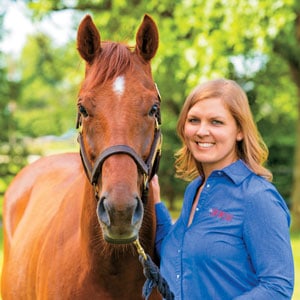A Few Tips and Tricks for Giving Oral Medications to Your Horse
- Posted by Stephanie L. Church, Editorial Director
Stephanie shares some tips and tricks she learned recently while trying to medicate her off-track Thoroughbred, Happy.
Share
ADVERTISEMENT

Here are the tools I used at one point or another during three-plus weeks of managing my horse’s illness under veterinarians’ recommendations/supervision. Not shown: Banamine and RiteTrac. | Photo: Stephanie L. Church/The Horse
Things I learned when I might have been my horse’s least favorite person.
Don’t ever look in the mirror after a late-night or early morning run to the barn to medicate your horse.
That’s what I did shortly after 12:30 a.m. a few weeks ago, when I returned from the barn after giving Happy, my off-Track Thoroughbred, three 60-mL syringes of milk of magnesia.
Yes, the laxative
Create a free account with TheHorse.com to view this content.
TheHorse.com is home to thousands of free articles about horse health care. In order to access some of our exclusive free content, you must be signed into TheHorse.com.
Start your free account today!
Already have an account?
and continue reading.
Share

Written by:
Stephanie L. Church, Editorial Director
Stephanie L. Church, Editorial Director, grew up riding and caring for her family’s horses in Central Virginia and received a B.A. in journalism and equestrian studies from Averett University. She joined The Horse in 1999 and has led the editorial team since 2010. A 4-H and Pony Club graduate, she enjoys dressage, eventing, and trail riding with her former graded-stakes-winning Thoroughbred gelding, It Happened Again (“Happy”). Stephanie and Happy are based in Lexington, Kentucky.
Related Articles
Stay on top of the most recent Horse Health news with













2 Responses
It seems a solution for the hassle of oral administration would be to make medications that taste good. Apparently this is not done. Any thoughts as to why? I’d love to get a flavored Banamine.
What works for me is to dunk the syringe in a jar of molasses and let them get use to that and then squirt the med in on about the third time. Works like a charm!